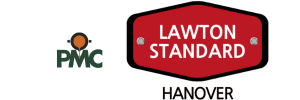
Selecting a foundry can be challenging whether you’re involved in a new project startup that requires cast parts or if you’re relocating patterns to a different supplier. Here is a simple process that will help you to identify the right foundry for your needs.
Step 1: Know your product
The more knowledge and information you have about the castings, the more productive you will be at narrowing down your list of prospective foundries. Working with a platform like The Lawton Standard Co. affords you the experience and capabilities of a family of companies with various casting capabilities across both iron and steel foundries.
Answering the following questions will provide you with the basic information about your product and will allow you to move to the next step in the process.
- Is this a new product or a part being transferred from an existing foundry process?
- If it is transferred tooling, collect as much information as possible. If you have pictures, dimensions, number of pieces, and material specs, this will help expedite the process.
- What cast material is needed?
- If a material is not identified, what are the minimum material property requirements?
- What is the overall size/geometry of your part(s)? The length, width, and height of the castings will all be questioned during this process.
- How much does the part weigh?
- Do you have a 3D model or drawing?
- Are there any specifications, whether they are internal or industry standards, that must be followed?
- What is the estimated annual quantity(s) to be produced?
Step 2: Identify your candidate foundries
Likely, you’ll start with a web search to identify foundries capable of making the type of cast materials you require. However, many foundry websites don’t contain enough information for you to make an informed decision.
It is essential to make personal connections with your prospective foundries. Please pick up the phone or email them directly. Foundries may have unique processes and configurations to handle different sizes, weights, and quantities that aren’t listed on their websites. It doesn’t hurt to ask if they can accommodate something outside of their published specifications. If they can’t help you, they may be able to refer you to another foundry who can accommodate your needs. We also work with our sister companies, C.A. Lawton, QESC – Houston, and Temperform further increasing what we can provide our customers.
Step 3: Visit the foundries
The third step is to visit the candidates you have qualified. Today, this can often be done virtually. Seeing their facility in action will help you determine if the foundry can deliver on its promises.
In closing, this is a very brief and concise look at a very complicated and challenging task. Our team has extensive experience in all types of foundry processes. Why not contact us with any questions you have about the foundry selection process? We’ll help you however we can, even if it turns out we’re not the best foundry for your project.





